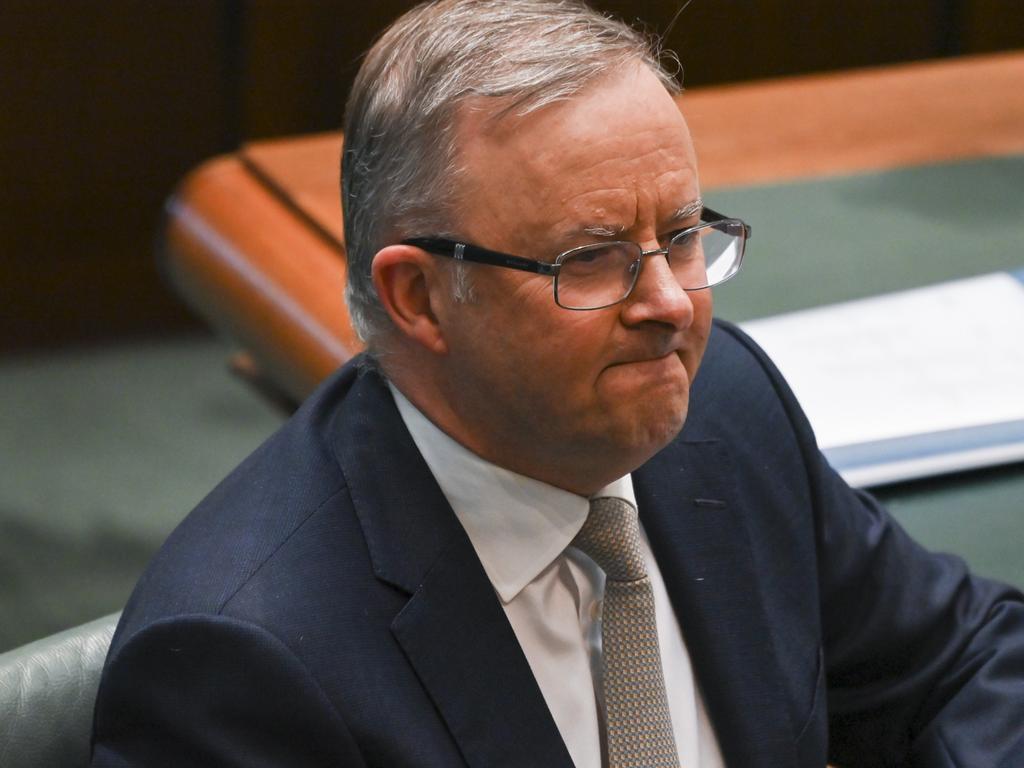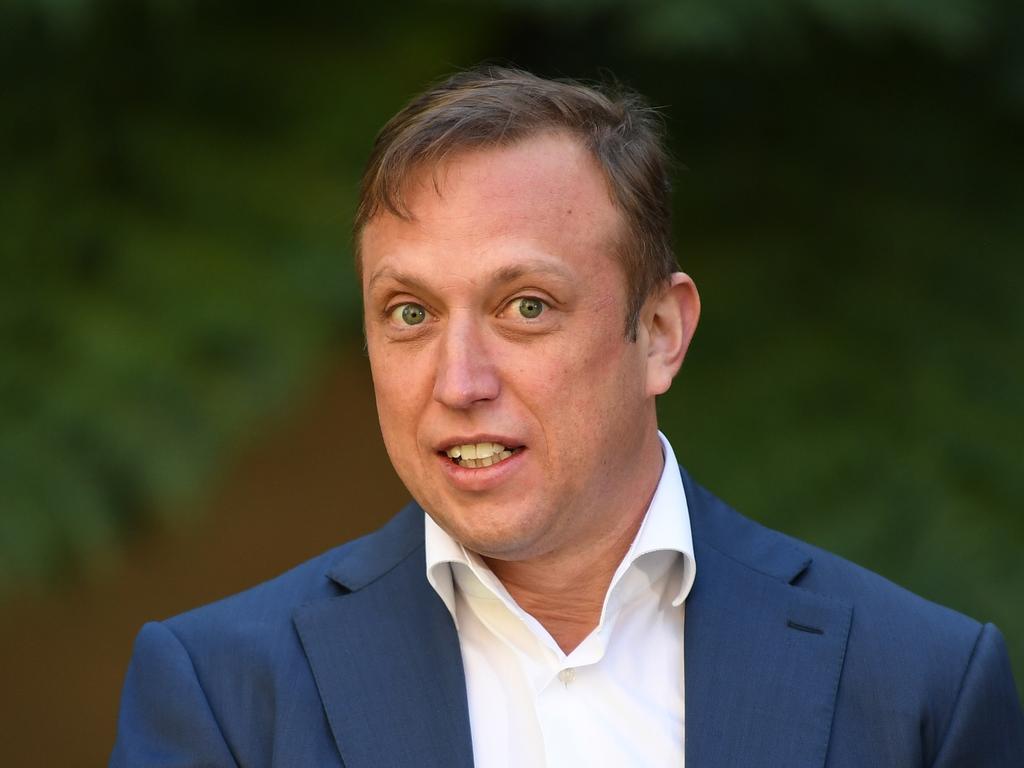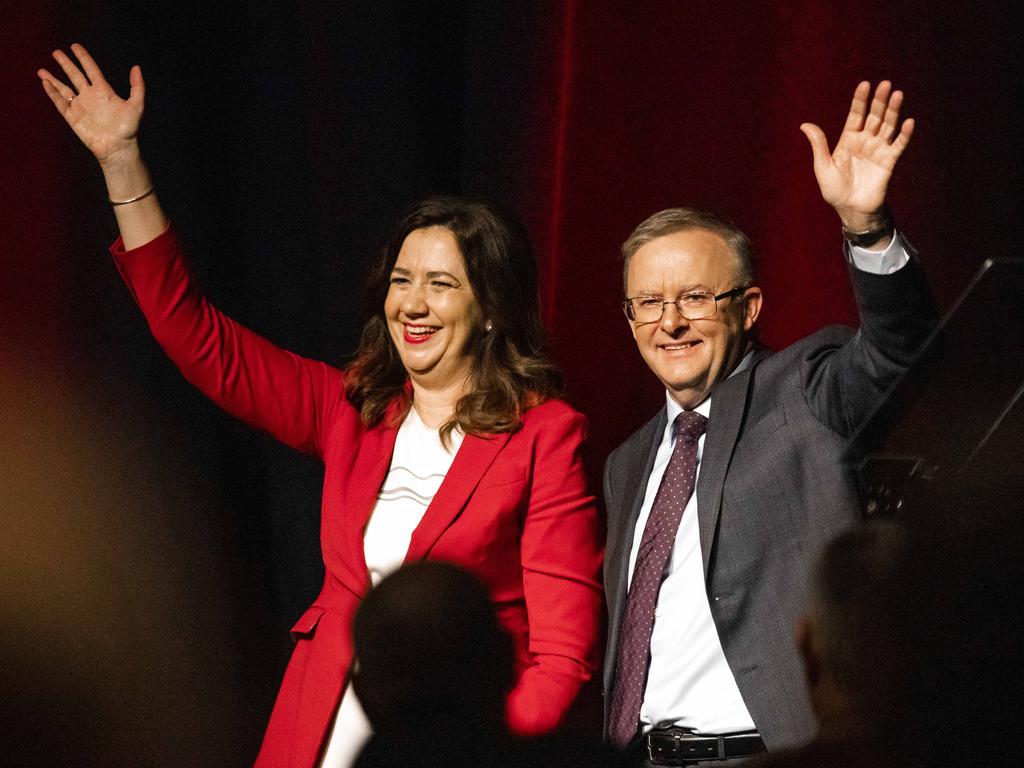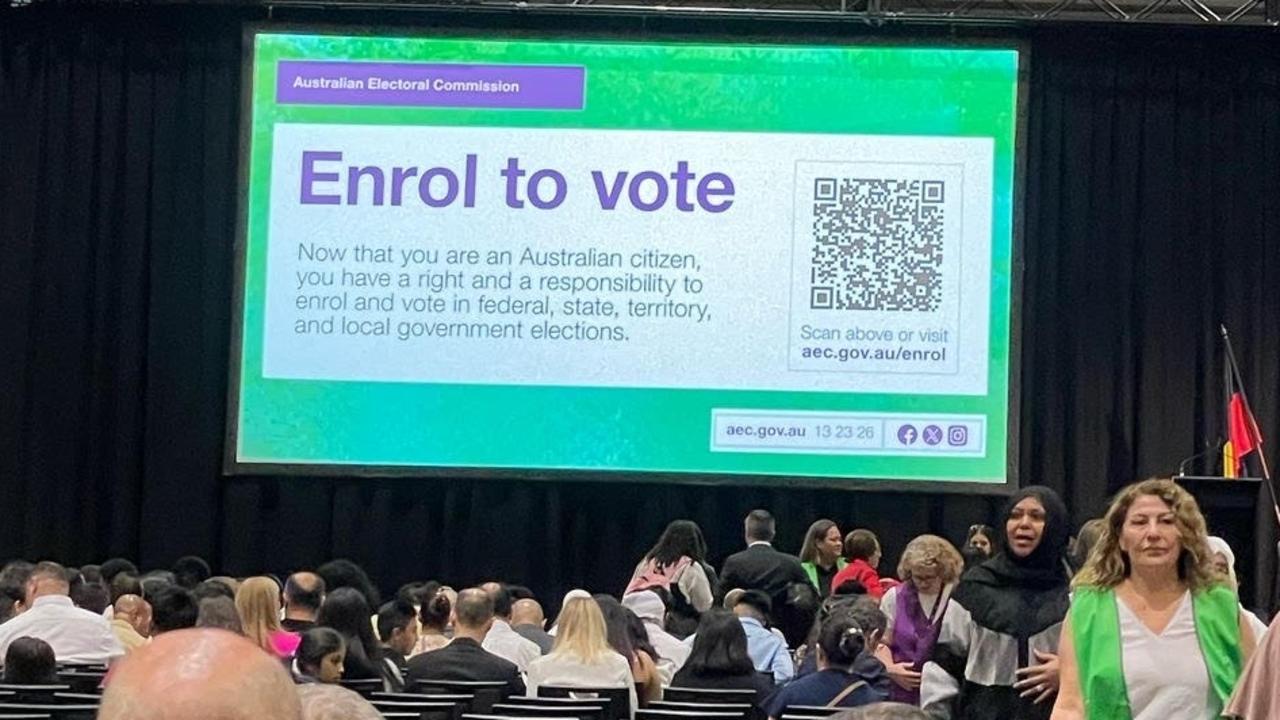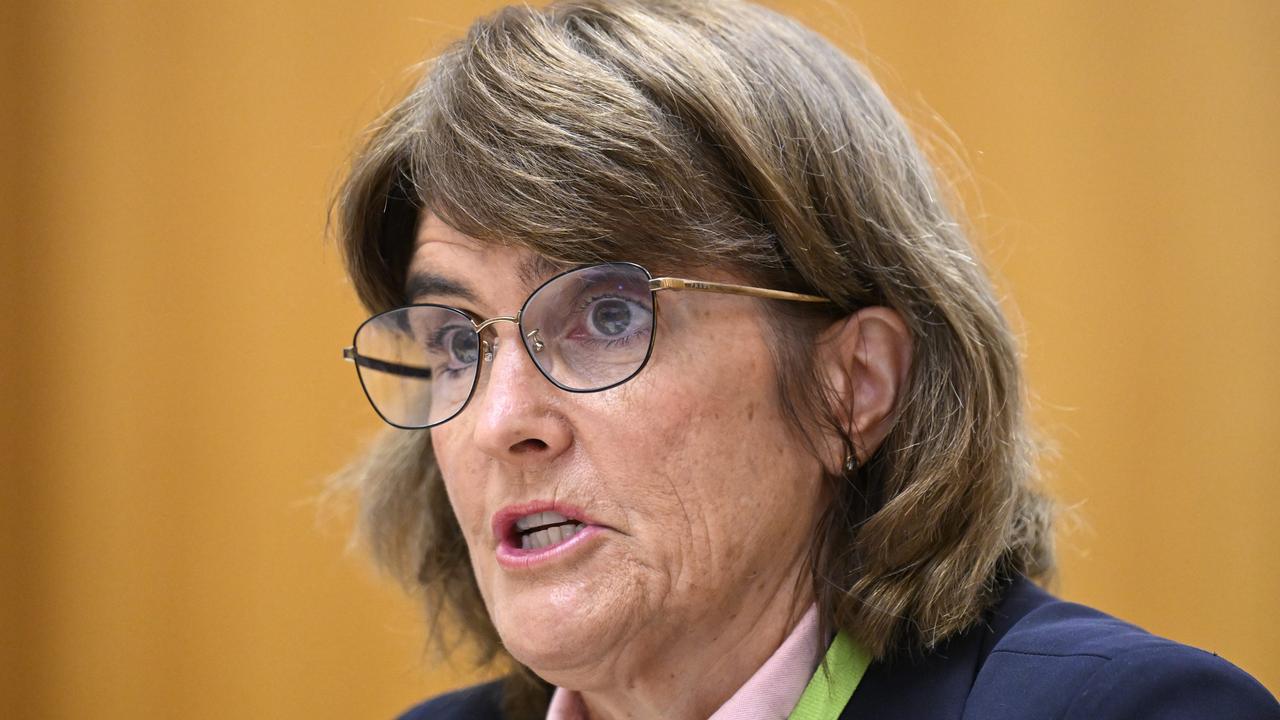Covid-19: Lagging states widen the divide before border reopening
The lower vaccination rates in Queensland and WA are deepening fault lines between the haves and have-nots in the nation’s Covid-19 response.
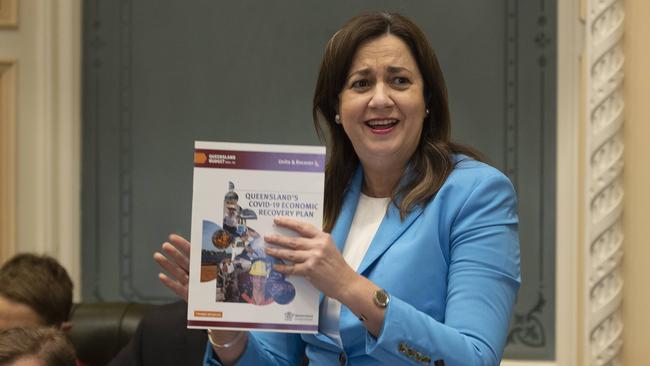
The lower vaccination rates in Queensland and Western Australia are deepening fault lines between the haves and have-nots in the nation’s Covid-19 response.
A new breakdown of state vaccination rates shows that WA will not achieve 80 per cent of over-16s double vaccinated – ending most domestic restrictions under Scott Morrison’s road map to recovery – until November 30, followed later by Queensland on December 7.
In the case of the Sunshine State, this would be five weeks after NSW hit 80 per cent to qualify to shift to a more Covid-normal setting of living with the virus. Citywide and state lockdowns are supposed to have ceased by then.
As of September 1, 32.9 per cent of eligible Queenslanders and 32.66 per cent of those in WA were fully dosed, against 38.68 per cent in NSW and 36.01 per cent in Victoria. NSW has administered 1.09 shots of vaccine per person compared to 0.85 doses per person in Queensland and 0.84 doses in WA.
Queensland Premier Annastacia Palaszczuk, increasingly at odds with the Prime Minister over the reopening plan, on Thursday warned the 70 per cent trigger to begin opening up would also lift Covid-19 deaths to 2240 a month nationally.
But she failed to mention this was a worst-case scenario under the benchmark Doherty Institute modelling, assuming little else was done to contain the virus.
Federal Health Department data shows that Queensland is delivering 48,933 jabs a day and WA 27,002 as the vaccine rollout ramps up. But this is still far slower than in NSW, with 139,914 doses administered on Wednesday. Victoria posted 81,683 vaccinations and there were 16,973 in South Australia, 5896 in Tasmania, 7389 in the ACT and 2796 in the Northern Territory for a national tally of 330,586 shots in the 24 hours to September 1.
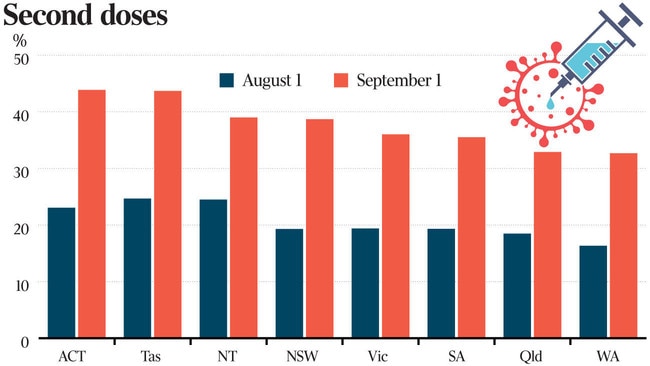
Infectious disease expert Paul Griffin, who was charged by Ms Palaszczuk with investigating a disruptive hospital outbreak in July, said Queensland’s sluggish vaccine uptake reflected false security in the community that border controls and lockdowns would keep Covid-19 in check.
“The messaging has been focused on the fact we are being kept safe and this is an effective way of managing the virus,” Dr Griffin said. “People have this perception that Covid is being kept out of the state and they are being kept safe. Let them know it will keep coming.”
While Vaxzevria (formerly AstraZeneca) was given in state-run vaccination clinics in NSW and Victoria, Queensland used only Pfizer, further slowing distribution. “Even people well within the eligible age group were discouraged from that vaccine,” Dr Griffin said, citing controversial comments by chief health officer Jeannette Young questioning the safety of Vaxzevria for under-60s.
WA Premier Mark McGowan has pinned the blame for the state’s low vaccination rates on the decision – which had WA’s support – to prioritise an additional million doses of Pfizer for NSW due to the scale of its emergency. He said on Wednesday it was galling his state was criticised by Mr Morrison “for not having the same vaccination levels as NSW when we didn’t get the million extra doses they got on top of their per-capita share”.
Despite Mr McGowan’s complaints about vaccine supply, a check on the main state-run vaccination clinic in Claremont on Thursday showed there were still vaccination slots available on both Thursday and Friday, and on at least one day for each of the next few weeks.
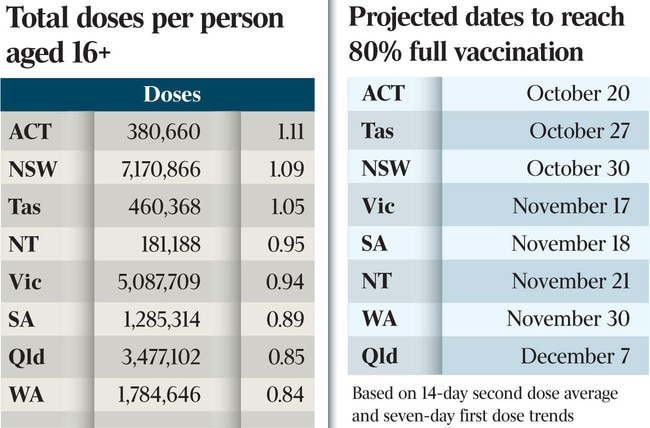
Shafi Sahibzada, a lecturer in epidemiology at Perth’s Murdoch University, said the tight border controls had allowed people in WA to put off getting their jabs.
On top of that, he said the pressures on WA’s health system – which this week cancelled some scheduled elective surgeries despite there being no Covid cases in the state’s hospitals – showed WA was not ready for an outbreak of the scale of those in Sydney and Melbourne.
“We will see spikes and we will see outbreaks and we are not prepared,” he said. “Instead of preparing for that, we are taking the easy path and keeping the border closed. That just won’t work for the long term.”
The head of the AMA in WA, Mark Duncan-Smith, said the lack of Covid-19 in the state was the biggest driver of vaccine hesitancy. “The maintenance of zero Covid and avoiding Covid outbreaks in Western Australia has been very good and effective, but it also reduces the motivation to get coverage for vaccination as people don’t feel pressured about it,” Dr Duncan-Smith said.
“The evidence of what’s happening in NSW hopefully will overcome that.”
Dr Griffin, director of infectious disease at Brisbane’s Mater Health, said some of Ms Palaszczuk’s language “had the potential” to fuel vaccine hesitancy.
Analysis of the federal Health Department data shows that the ACT will be the first jurisdiction to achieve 80 per cent of over-16s doubled-jabbed on October 20 on current vaccination rates, followed by Tasmania on October 27 and NSW on October 30.

